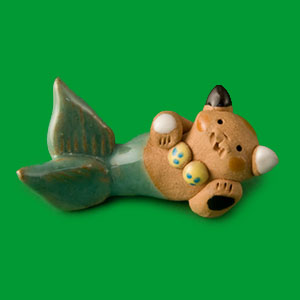 Kids will be inventing their own creatures by combining two animals (or more) into one. By morphing the top half of a cat with the tail of a fish – Voila a new species. They will sculpt them, name them and who knows what else. ALL the clay is being donated by Victoria (big M&B thank you!) Of course if any one parent or child wants to do something else with the clay – that always receives a thumbs up @ Mudpies & Butterflies! Self-expression is key – as is Confidence. Which is where this next request comes from…
Kids will be inventing their own creatures by combining two animals (or more) into one. By morphing the top half of a cat with the tail of a fish – Voila a new species. They will sculpt them, name them and who knows what else. ALL the clay is being donated by Victoria (big M&B thank you!) Of course if any one parent or child wants to do something else with the clay – that always receives a thumbs up @ Mudpies & Butterflies! Self-expression is key – as is Confidence. Which is where this next request comes from…
Can we only practice open-ended questions around the clay play?
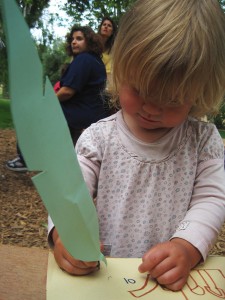 What happens when kids draw or paint? Oftentimes, parents, teachers, or elders say – “What is that?” Due to past experiences for the child, I witness the energy shift and a struggle begin with in the child. Bodies slump; they take deep, preparing breaths; and sometimes art supplies drop from their hands. They are pulled out of “being in the art”to fulfill someone else’s need. Who has witnessed a child’s frustration when a well-intentioned comment about what they have drawn doesn’t match at all to what they were creating. Have you also ever noticed, that when kids are working in proximity to each other, they OBSERVE each others work, and usually wait for the actual artist/owner to speak about their piece before offering any comments. Most young kids are intuitively aware that the journey as well as the end product belong to the person who is creating. Hmmm…
What happens when kids draw or paint? Oftentimes, parents, teachers, or elders say – “What is that?” Due to past experiences for the child, I witness the energy shift and a struggle begin with in the child. Bodies slump; they take deep, preparing breaths; and sometimes art supplies drop from their hands. They are pulled out of “being in the art”to fulfill someone else’s need. Who has witnessed a child’s frustration when a well-intentioned comment about what they have drawn doesn’t match at all to what they were creating. Have you also ever noticed, that when kids are working in proximity to each other, they OBSERVE each others work, and usually wait for the actual artist/owner to speak about their piece before offering any comments. Most young kids are intuitively aware that the journey as well as the end product belong to the person who is creating. Hmmm…
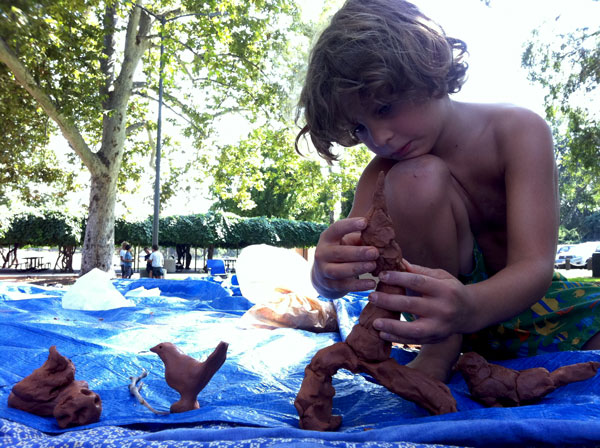 Are our inquiries stifling the creative juices flowing through their hands holding crayons, pencils, or paint brushes? And why does the art piece have to be something? The stimulation of the process is the main event for these early years: the bumps on the paper, the firmness of the tool in their hands, the way pigment thins as it is smeared across the page. All these “mini-experiments” are impacting their brains along with the smell of the room, the rumble in their belly, and the light casting shadows. And if the artistic idea they started with isn’t spoken aloud, a child will confidently, freely, let it morph into something else. Or maybe the magical journey of blurring colors into oblivion or the intense release of rubbing a crayon to a nub becomes so uplifting, the initial image is unwittingly
Are our inquiries stifling the creative juices flowing through their hands holding crayons, pencils, or paint brushes? And why does the art piece have to be something? The stimulation of the process is the main event for these early years: the bumps on the paper, the firmness of the tool in their hands, the way pigment thins as it is smeared across the page. All these “mini-experiments” are impacting their brains along with the smell of the room, the rumble in their belly, and the light casting shadows. And if the artistic idea they started with isn’t spoken aloud, a child will confidently, freely, let it morph into something else. Or maybe the magical journey of blurring colors into oblivion or the intense release of rubbing a crayon to a nub becomes so uplifting, the initial image is unwittingly 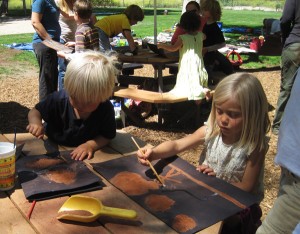 sacrificed. We parents, waiting in the wings for evidence of burgeoning Picassos, may be coveting that initial image too greatly. With emphasis on genius, we could be preventing a more natural education of their world from developing.
sacrificed. We parents, waiting in the wings for evidence of burgeoning Picassos, may be coveting that initial image too greatly. With emphasis on genius, we could be preventing a more natural education of their world from developing.
In my mind, clay is powerful in the World of Art for Children. It reeks of PLAY, not expectations. Children (and adults) who mistrust the looming liberty of 2-dimensional art, are willing to give this crazy, squooshy mud a chance. Even if a child has tightened their expected reign of reality in drawing or painting, a child might explore imaginatively with clay. And did you know that by working with a piece of clay in your hands and not on a table, helps us readily pull a shape out of the lump instead of attaching pieces to it. This calls upon more organic deductive reasoning, similar to how we find shapes in clouds. This is minimizes frustration and maximizes creativity. Clay can be pinched in here and smoothed over there, allowing their imagination and experiential knowledge to wish the artwork into existence.
 To inhibit critique and foster maximum creativity, I am asking everyone (including myself) to practice open-ended inquiries with each other during CLAY play. (This can be done with drawing and painting as well.) The idea, is that through active listening to thoughts and ideas, our children will feel that their unique perceptions and ideas are worthy. But to do this , we have to convince them we will patiently listen to whatever they choose to share. You can do this with an open-ended question that invites them to share and respectfully await their response. Not responding isn’t necessarily a cue to repeat the question louder, but a opportunity to witness your child deeply engrossed “in the art.” As you wait, you can just breath and watch or grab your own clump of clay and work beside them.
To inhibit critique and foster maximum creativity, I am asking everyone (including myself) to practice open-ended inquiries with each other during CLAY play. (This can be done with drawing and painting as well.) The idea, is that through active listening to thoughts and ideas, our children will feel that their unique perceptions and ideas are worthy. But to do this , we have to convince them we will patiently listen to whatever they choose to share. You can do this with an open-ended question that invites them to share and respectfully await their response. Not responding isn’t necessarily a cue to repeat the question louder, but a opportunity to witness your child deeply engrossed “in the art.” As you wait, you can just breath and watch or grab your own clump of clay and work beside them.
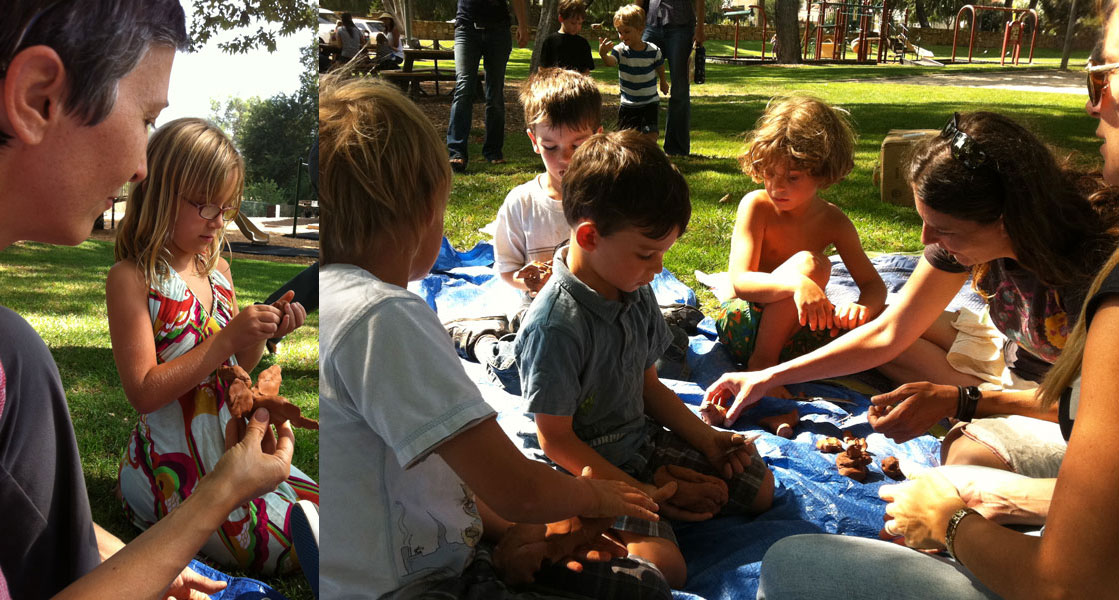 A good question to start with is, “What is happening now?” This might seem uncomfortable if you don’t often find yourself asking your children for updates. Adults are used to naming things, identifying and communicating what we see to our kids. But phrases that encourage more than a single word response, tell the other person “I really want to hear YOUR answer.” This communicates that we are prepared to wait as long as they need to respond. Another good line is, “I would love to know how did you do that?” Yes, you probably know how they did it, but we aren’t listening for the specific answer, but opening their gates of creativity. We are empowering them to feel content with their expression.
A good question to start with is, “What is happening now?” This might seem uncomfortable if you don’t often find yourself asking your children for updates. Adults are used to naming things, identifying and communicating what we see to our kids. But phrases that encourage more than a single word response, tell the other person “I really want to hear YOUR answer.” This communicates that we are prepared to wait as long as they need to respond. Another good line is, “I would love to know how did you do that?” Yes, you probably know how they did it, but we aren’t listening for the specific answer, but opening their gates of creativity. We are empowering them to feel content with their expression.
Some of you may recognize that your kid doesn’t have a problem opening up and instead tells you EVERYTHING. That is great! Bu there will be a time when this free sharing of thoughts and questions will end. Usually because they think you don’t listen enough or they think they or their peers know more than you do. And as pre-teens or teens in a world filled with dangerous temptations, you will wish they would tell you everything again. Honing this skill now, is exactly how you will bridge those years. Here is your chance to build a foundation that you can both tap into down the road, because they will know the difference between you patiently listening versus just going through the motions.
 With follow up question like, “Can you tell me more about it?“ and their delight in sharing freely with you lets you know that you are on the right track. And then, all of sudden, you are tempted to correct the way they made something. Don’t point it out. Instead focus on their body language and how they are feeling. If they are building an animal ask,
With follow up question like, “Can you tell me more about it?“ and their delight in sharing freely with you lets you know that you are on the right track. And then, all of sudden, you are tempted to correct the way they made something. Don’t point it out. Instead focus on their body language and how they are feeling. If they are building an animal ask,  “What would it be like to ride a creature like that?“ Help them conjure their feelings or experiences. Or, “What would it feel like to pet that animal?” Or if it was a place, “What would happen if we traveled there?“ This may bring their attention to a detail they haven’t gotten too before or maybe not. Paintings and sculpture, hold less internal restrictions if children are tapping into their past experiences and perceptions of how the world works and not by surfing our expectations of what the final product should look like.
“What would it be like to ride a creature like that?“ Help them conjure their feelings or experiences. Or, “What would it feel like to pet that animal?” Or if it was a place, “What would happen if we traveled there?“ This may bring their attention to a detail they haven’t gotten too before or maybe not. Paintings and sculpture, hold less internal restrictions if children are tapping into their past experiences and perceptions of how the world works and not by surfing our expectations of what the final product should look like.
If playing with art supplies (or sports) ends up with us feeling empty, misunderstood or lacking, why try anything new? My goal with this activity is to help M&B kids to feel that their voice and perceptions are appreciated by parents, peers, friends and society. And as their caregivers, we represent the world who believe that art (and life) is not a world of right and wrong, but can open up wide to respectfully hold many things in between. And even if the piece of art doesn’t end up fully-realized to match their image in their head, the experience of thinking about it, manipulating it, and sharing can hold positive feelings for us all.
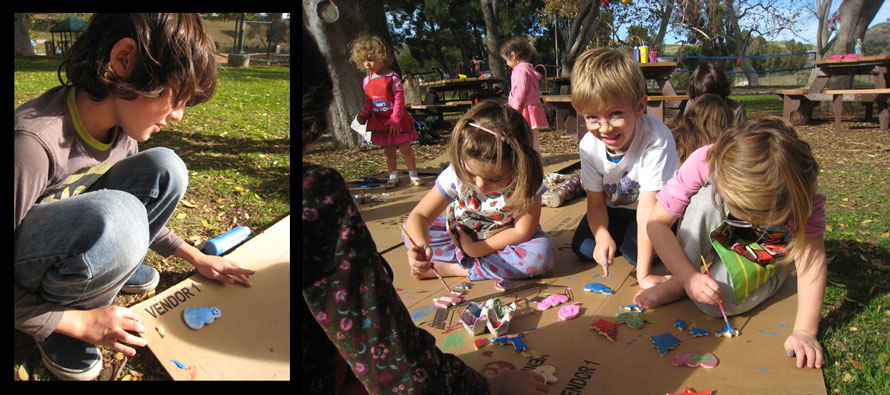
Recipes for two types of reusable play clay. And 50 questions to spark fun & communication!
]]>